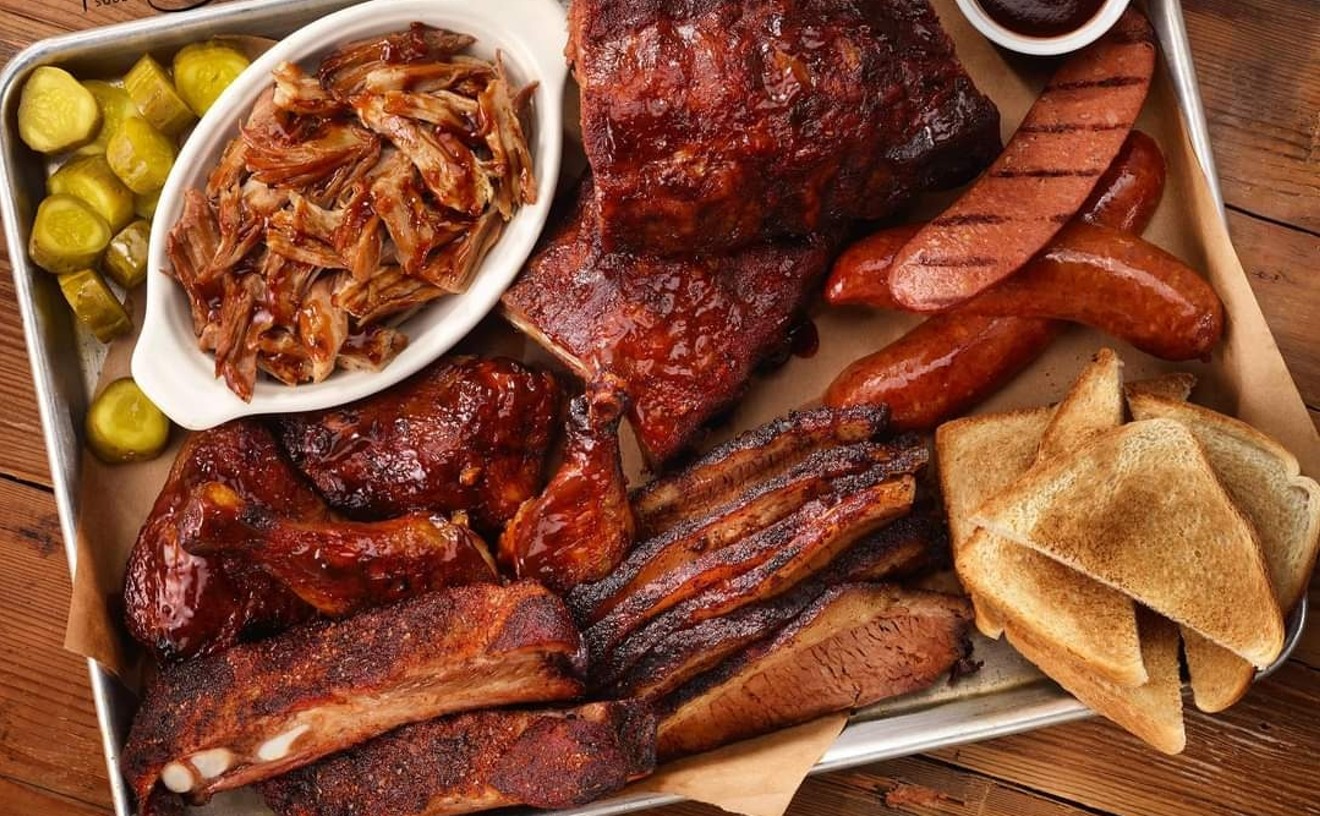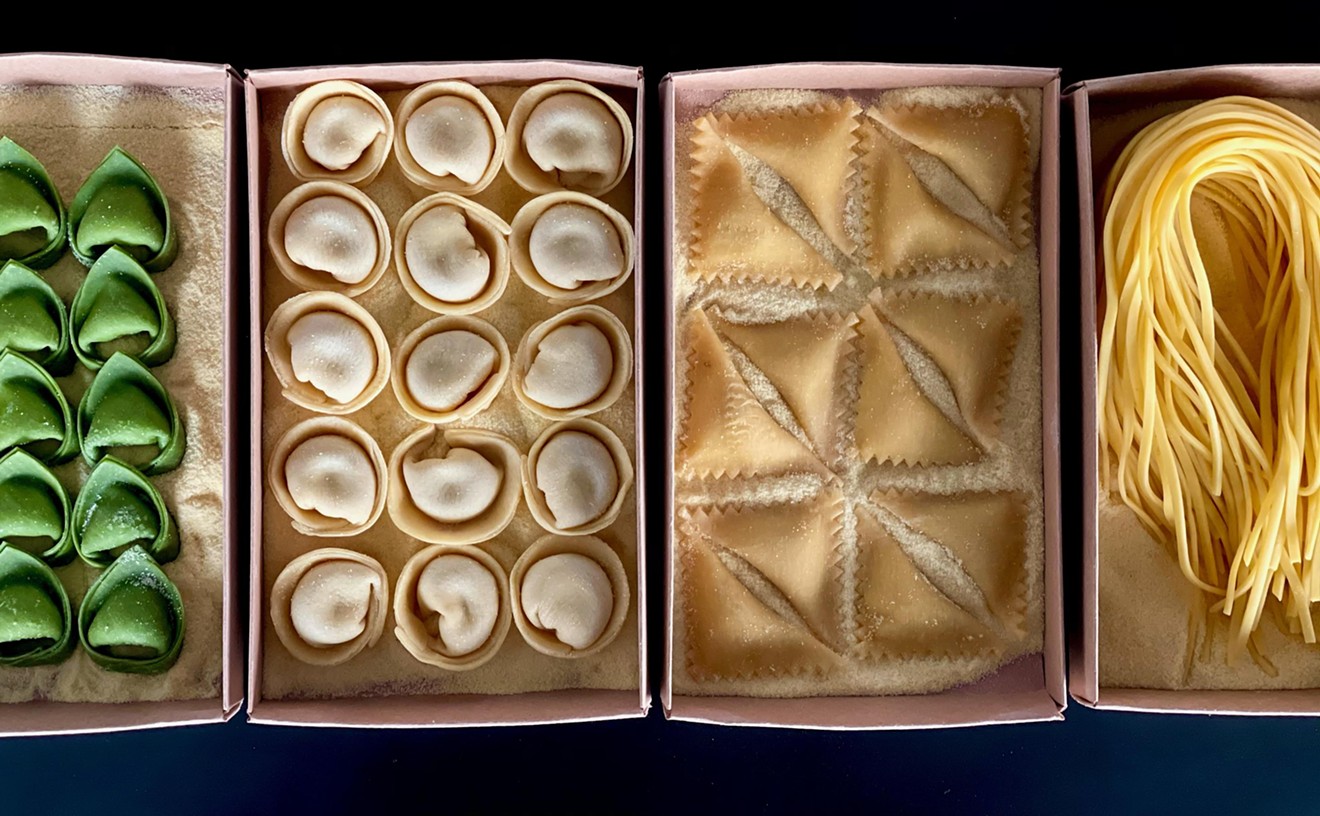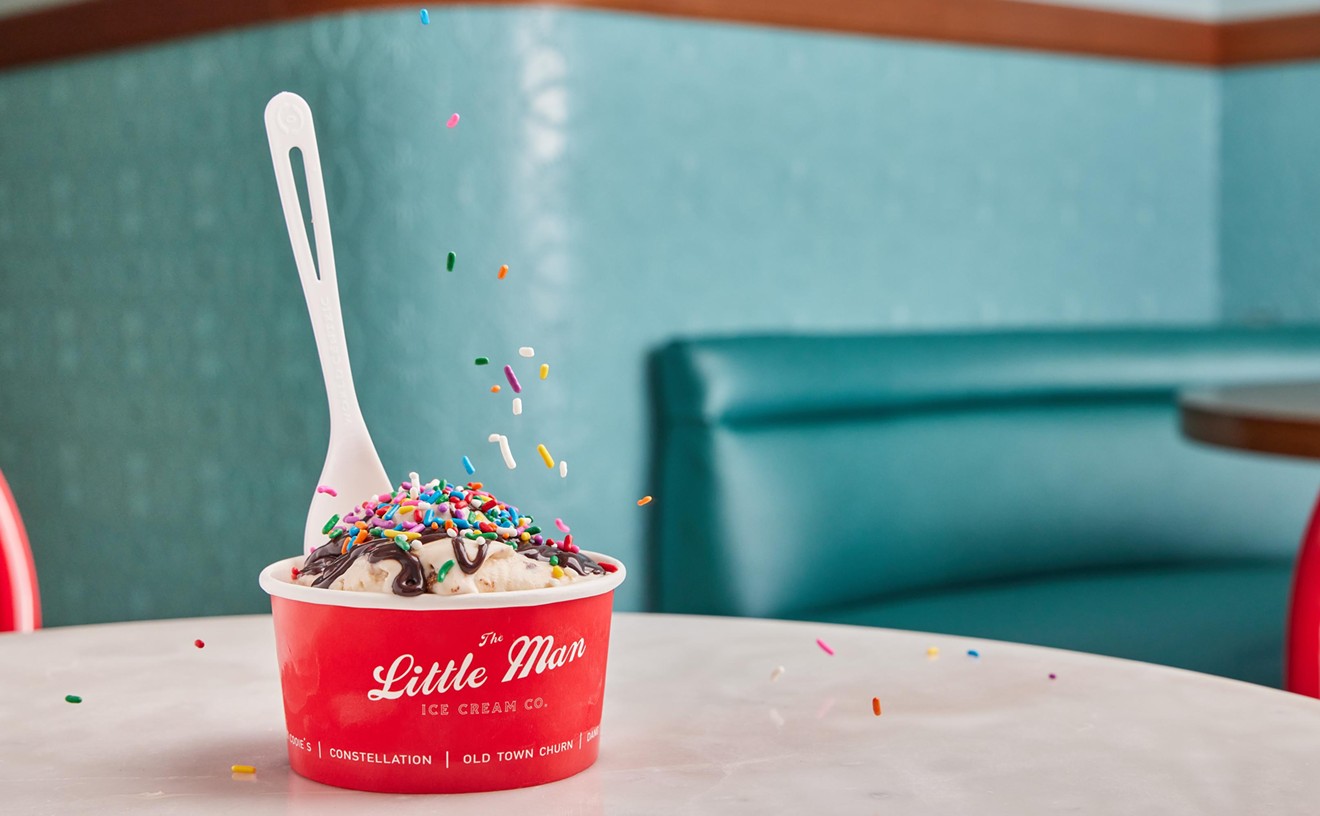Wednesday night, I had a pizza. Doesn't matter from where — let's just say it was from a well-known chain, well-known for serving halfway-decent ingredients atop cardboard crusts to drunken frat boys, suburban families and, occasionally, lazy restaurant critics. Let's just say the name rhymes with Papa Juan's.
Friday night, I had my first pizza at Marco's Coal-Fired Pizzeria. My first two, actually. And I had to be restrained from ordering a third.
The difference between the two experiences is like the difference between a warm bottle of Boone's Farm and an Oregon pinot gris — not the greatest bottle in the world, but a really, really good one. It's like the difference between a kiss from your sister and a kiss from your lover.
Over five days, I made three trips to Marco's. I would have made more, but I simply ran out of hours. As with a new girlfriend or something even less savory, I just couldn't get enough; I was fascinated by the day-to-day, shift-to-shift, hour-to-hour variations. The differences between the chain pie and a Marco's pizza are vast, measured not in rational numbers, but orders of magnitude: a stick of TNT versus an atom bomb, Godfather I versus Godfather III. But the minute differences between one Marco's pie and the next was what truly hooked me — minor notes of taste, of savor, of char that seemed to shift with the wind, with minute adjustments in the temperatures of the ovens, in the space, sometimes, of a breath. Each pizza was its own creation, possessed of its own character, absorbing down to each detail.
The restaurant itself is full of character. The dining room has an aesthetic of curves and iron and weathered-brick age — the first implying smoke, the second a heavy weight of seriousness, the third a nice trick for a place that's only been open for four months, even if the building itself dates back to before the turn of the last century. And the service is uniformly great. When I first talked with Mark Dym shortly after he and his wife, Kristy, opened Marco's, he said he wanted their place to offer a sense of fantasy-Italian bonhomie, where two visits make you a regular and three a member of the family. It worked for me. On a Friday night, Marco's was packed — a press at the bar, the floor awash with the LoDo crowd, the open pit of the kitchen a riot of artigiani — and the service was excellent. On a Sunday, Marco's was quiet, the service personal and personable. On a Monday, it was busy again and the service never missed a beat.
But the pizza is what matters here, and what matters most is the crust. Its terroir is both foreign and intensely local: Antico Molino Caputo flour brought in all the way from Naples and the five square feet that surround any of the pizzaiulos, the steps between their work surface and the smoking orange maw of the ovens behind them.
Double-O Caputo flour is, arguably, the best in the world for making pizza dough. I've read descriptions of the mill where it is ground, the laboratories where it is tested. People compare the selection of grains and the mixing of batches to the kind of obsessed focus and sophistication seen in a Burgundy winery or a French perfumerie. This is a low-gluten flour (11 to 12 percent, as opposed to 14 or 15 percent in most brands), highly refined and tasting of the wheat from which it was made. One batch is supposed to be exactly like the next — which means that any difference between one crust and the next is purely a function of the baking, the mixing, the kneading, the oven.
You can't miss the ovens here. They're huge, open-mouthed, coal-fired, glowing a fierce orange-red. And if you do happen to somehow miss them, you still can't miss them, because Mark Dym has a habit of grabbing people at their tables and taking them on impromptu tours of the open kitchen, focusing primarily on the blackened, dragon-mouthed 1,000-degree ovens. Built in Naples, brick by brick, then shipped all the way to Denver — Dym is insanely proud of them. When operating full blast, they can cook a pizza in sixty seconds flat.
Which is where that breath of difference, one crust to the next, comes in. Fifty-nine seconds, you get one crust. Sixty-one seconds, you get another one entirely. Like a great sushi chef who knows precisely how long he can manhandle that toro sashimi before the heat of his hand begins to cook the delicate flesh of the fish, a great pizza maker in this kitchen must know to the instant how long his crust wants to be blistering under that intense heat. There is no room for error, for clumsiness. To this end, a couple of fancy-pants ovens were not the only things that the Dyms brought in from Italy. They also got Roberto Caporuscio, an unapologetic pizza purist who trained under a guy in Italy who'd done nothing but make Neapolitan pies for fifty years. When Caporuscio first arrived in this country, he worked in Pittsburgh and Jersey (where he was canned because he refused to change his method of making super-traditional Neapolitan pizzas under pressure from owners to Americanize the joint), then moved to Colorado to join the Dyms. He is a man who does not compromise, who knows the truth of one thing — pizza — and will not turn away from it.
As they did with Caporuscio, the Dyms try to acquire the best of everything to put on those crusts — and when the best isn't readily available, they make their own. So the tomato sauce on the pizzas is San Marzano, imported from Italy, the only sauce that should ever be used on a serious pizza. The produce is locally grown (whenever possible), the mozzarella made by hand.
First night, I had the Sicilia, stuffed with ricotta and thin-cut Genoa salami, topped with chopped artichoke, ham and slabs of fresh-made mozzarella melted into a Rorschach pattern, barely holding their form. The stuffed crust was soft, charred at the edges and powerfully redolent of smoke, with an almost gooey quality that surprised me, made me wonder if maybe sixty-five seconds might not have been a bad idea. The Campania that followed it, though, settled my hash: so plain and perfect, just mozzarella and a couple charred leaves of basil; crisp-bottomed under a light jacket of chunky, sweet, gorgeous San Marzano sauce; swollen at the bone and gently tasting of fresh wheat. They were two completely different pies, all their character showing in the minute variations in the crust.
Second night, I ordered the Staten Island — more mozzarella, more salami, Pecorino Romano and tomato sauce — and a Margherita, a Staten Island without the salami, then carefully watched the cook manning the stoves. The Margherita went in second and was pulled first, receiving perhaps four seconds less love from the brick and wood and fire, and those four seconds made all the difference in the world. It was smoothly risen at the bone, droopingly soft at the center, and the bottom was mottled, brown and pure bone-white like a palomino horse. The Staten Island was black and white — like a roughly sketched pen-and-ink map of an island-chain kingdom of infatuated pizza-makers — its skin raised in tiny, blackened blisters and crisp as pork cracklings, unbelievably delicious.
Third night, I got the Abruzzo: Buffalo mozz, parm Reggiano, Sardinian Gran Cru and Sicilian caciocavallo. This time I didn't notice the crust at all, because I was too focused on the unusual interplay of mozz and parm, something that tasted a little like a good, funky provolone, something else that tasted like maybe a fontina or a Gruyère, but wasn't. The result was like the multi-cheese pizza God must get when he goes out for a slice — unlike most multi-cheese pizzas, which just taste like a foot. When I finally slowed down enough to look, I saw that this crust was stiffer than all my previous pizzas, smokier, more redolent of coals. If bread could (or should) be barbecued, it would taste like this.
But even those ovens can't save the chicken wings — dressed in oregano, lemon and black pepper, topped with a pile of roasted sweet onion slices, then blasted right alongside the pizza. I made two runs at them before deciding, once and for all, that chicken wings are why the Frialator was invented and that eating chicken wings without wing sauce is like eating chicken wings that someone forgot to sauce, nothing more — an oversight raised to the level of cuisine, but one of which I, a Buffalo purist, am no fan. Much better was the antipasti — a huge white plate set with a spread that said, "Hey! Here's a little bit of everything that's awesome in the back." The prosciutto was San Danielle and sliced as thin as a dream, thin enough to see through, to melt on my tongue. There was a little Genoa salami, some sopresata doused in olive oil, three cheeses, dots of unbelievably sweet aged and reduced balsamic vinegar, chopped mushrooms with a little oil and parsley, some focaccia bread (not made fresh, but warmed in the oven) and a whole red pepper stuffed with delicious brown tuna in olive oil that lit my entire head on fire.
Marco's is what comes of aiming for the best, of refusing to settle for anything less. And while it is true that I have, and always will have, a soft spot for the crazies out there — the cooks and chefs who refuse to compromise, who will not bend no matter how strong the cross-current of modern taste — I firmly believe that it is only in pushing the boundaries of what is possible that one approaches transcendence. At Marco's, the Dyms, their crew and their chef have shown the complexity, variation and beauty inherent in something as simple as a pizza. By refusing to compromise, they have shown what a pizza can be when no expense, no effort, no amount of mileage is spared.
Even if I still think they should have made a side trip to Buffalo before they decided to make chicken wings.










